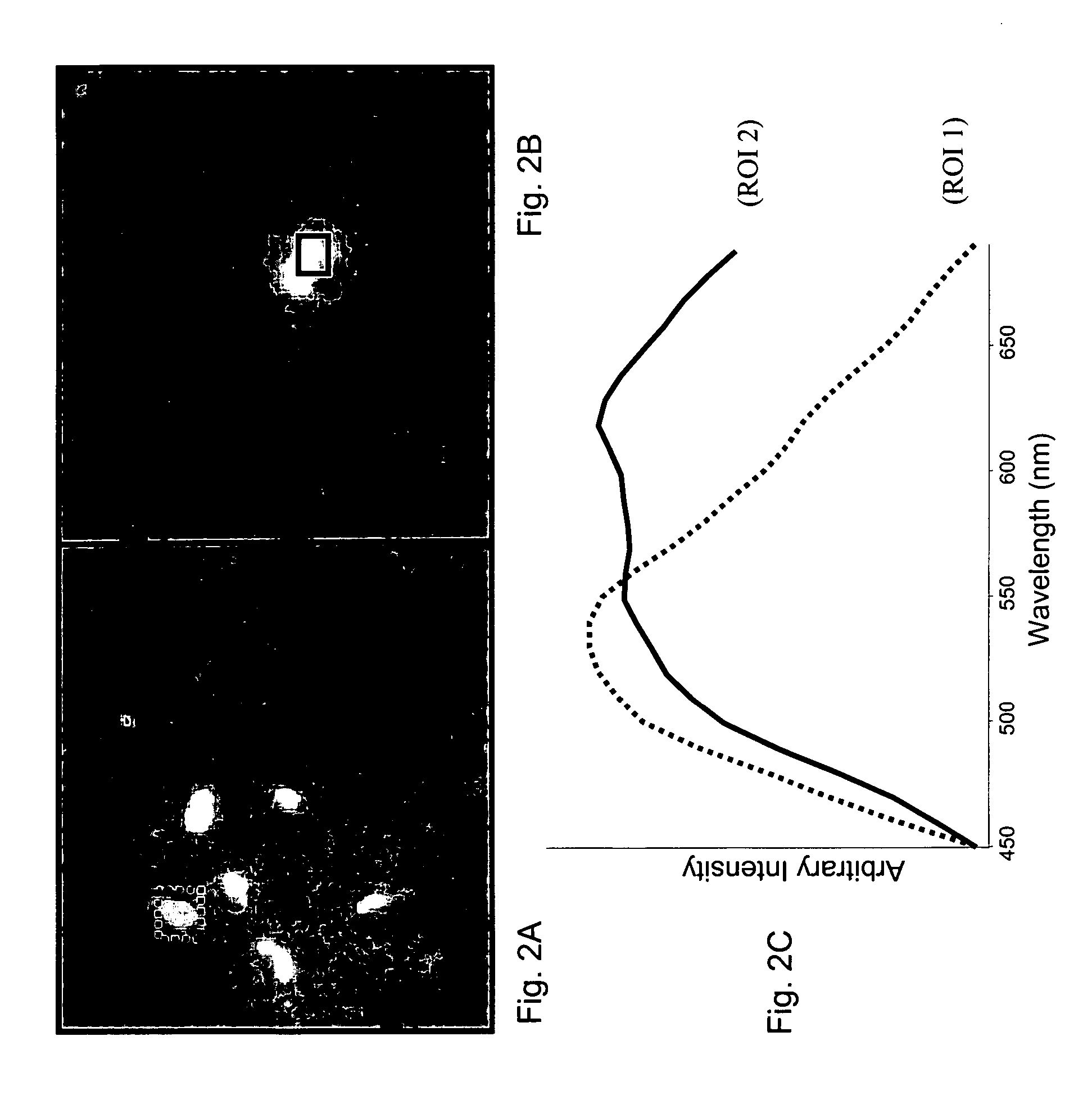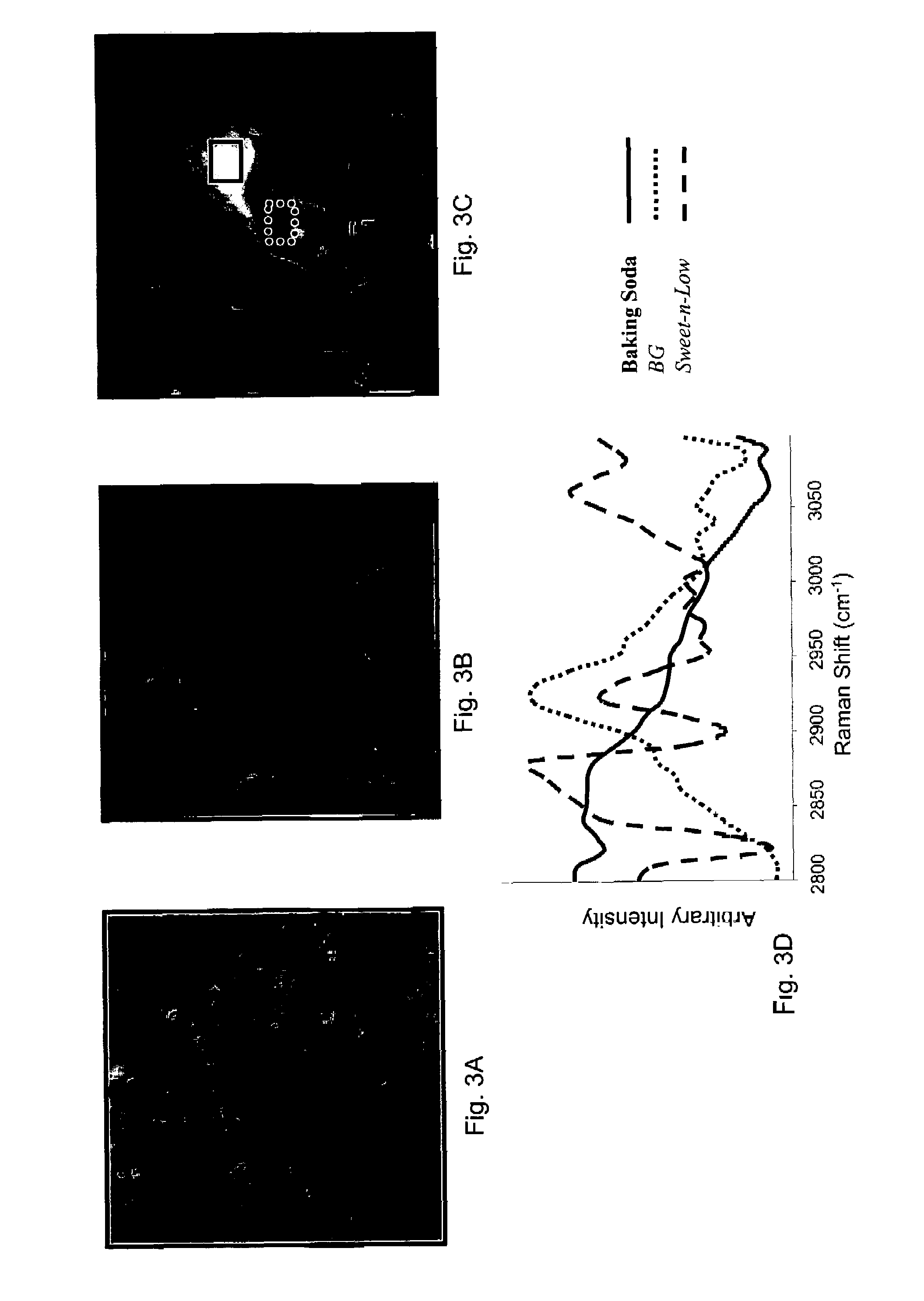Raman spectral analysis of pathogens
a pathogen and spectral analysis technology, applied in the field oframan spectral analysis of pathogens, can solve the problems of serious illness, many shortfalls in immunological detection methods, and particle suspensions which find their way into surface water for significant periods of tim
- Summary
- Abstract
- Description
- Claims
- Application Information
AI Technical Summary
Benefits of technology
Problems solved by technology
Method used
Image
Examples
examples
[0091]The invention is now described with reference to the following Examples. These Examples are provided for the purpose of illustration only, and the invention is not limited to these Examples, but rather encompasses all variations which are evident as a result of the teaching provided herein.
[0092]FIG. 4 shows how fluorescence spectroscopic imaging can be used to distinguish between bacteria spore types. The fluorescence spectra in the lower portion of the figure were obtained from the color-coded boxed regions in the concatenated fluorescence spectroscopic images above. It can be seen that Bacillus subtilis spores and Bacillus pumilus spores exhibit fluorescence peaks maxima at 540 nm and 630 nm, respectively.
[0093]Advanced image analysis and chemometric tools take these differences in fluorescence spectra and perform a spatial identification of species, producing the image in FIG. 4. The following is a representative algorithm for performing this analysis:
[0094]1) Divide the r...
PUM
| Property | Measurement | Unit |
|---|---|---|
| diameter | aaaaa | aaaaa |
| Raman shift | aaaaa | aaaaa |
| Raman shift | aaaaa | aaaaa |
Abstract
Description
Claims
Application Information
 Login to View More
Login to View More - R&D
- Intellectual Property
- Life Sciences
- Materials
- Tech Scout
- Unparalleled Data Quality
- Higher Quality Content
- 60% Fewer Hallucinations
Browse by: Latest US Patents, China's latest patents, Technical Efficacy Thesaurus, Application Domain, Technology Topic, Popular Technical Reports.
© 2025 PatSnap. All rights reserved.Legal|Privacy policy|Modern Slavery Act Transparency Statement|Sitemap|About US| Contact US: help@patsnap.com



